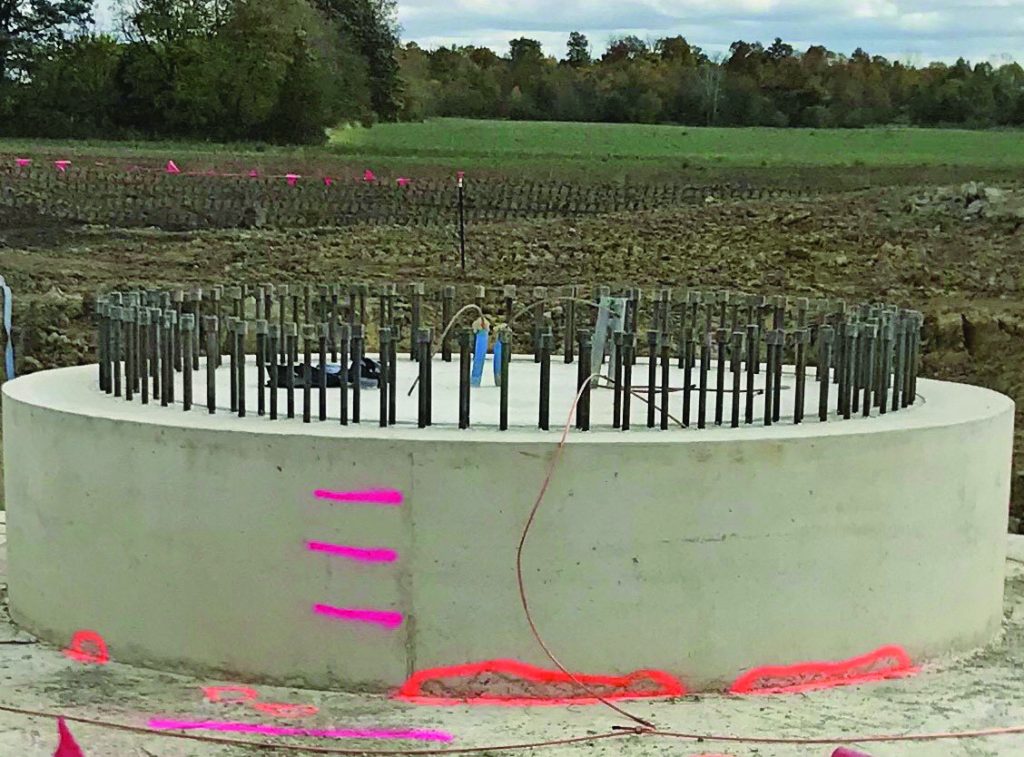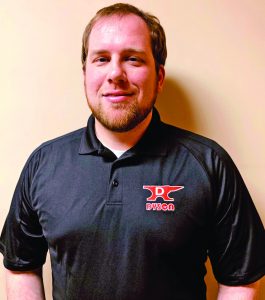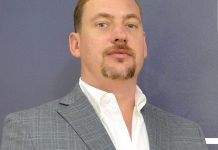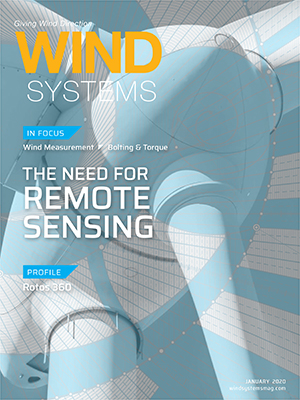What’s a typical day like for you at Dyson Corporation?
I’m mostly in constant communication with our customers and then with our production team out on the floor. I’m doing quoting for the customers, trying to get status updates on projects that we have that are ongoing, updating current shipments schedules, making sure everything stays on track. And then we’re trying to get feedback from customers as well about the quality of the products they’re seeing on-site that’s coming from us — schedule changes and what small improvements we can make as these jobs go on that make things run smoother for them and make sure they’re still on schedule.
And then with our production team, we’re just making sure they’re on schedule, they’ve got all their equipment up and running well, or whatever ancillary things that they might need that just keep the project going and keep them running efficiently. That’s how most of my day is spent generally.
What does Dyson do for the wind industry?
We supply the anchor rods, nuts, washers, and PVC for the foundations, as well as rod caps and grease for when the project is complete that protects the exposed threads of the anchor rods. All of our rods and nuts are 100 percent melted and manufactured in the U.S. Our manufacturing is all done in Painesville, Ohio. All of our material is 100 percent traceable. It all goes back to when the steel was melted at our steel supplier. We gauge and test all of our threads and all of the products that we’re sending out so we know that it all works properly. Everything is certified by a third-party testing lab that we use to make sure our materials are meeting the grades that are specified.
What makes Dyson unique to wind?
We have a proprietary thread on our anchor rods and nuts that we developed in early 2000. We have the ability to pretension every rod that we ship out to the site to make sure it meets the standard of the spec for each rod and how it’s tensioned in the field, so we know that we’re not sending out a rod that’s going to break at that tension point. And we’ve got experience from our production manager and our director of engineering — about 40-years-experience together in the wind industry. We have a very knowledgeable staff here as well. We were also ISSO9001:2015 Certified, so that quality specification is there as well.
How do you work with a client when they come to you with a particular challenge?
Each wind project and each job site is very different. There are a lot of similarities, but there are a lot of small details that make each job unique. In our view, listening is the first thing. You have to be able to identify each small detail of the challenge that they’re facing. And then once we kind of nail all that down, really as I touched on our engineering and production experience, we kind of lean on them. They’ve done a great job of being able to identify solutions and work with our customers — whether it’s the engineer of record for the project or the engineers for our specific customers — just to find a solution for those problems. We can kind of take that and apply it to those challenges and use that to improve our processes as well as foresee some of those challenges in the future and apply it to our processes going forward.

As the wind industry has evolved, how has Dyson evolved with it?
It’s taken off quite a bit in the last few years. Dyson is investing in the wind division. We’ve dedicated an entire business unit and entire division to the wind industry. We’ve added some production lines, and we’re running multiple shifts, so we’re bringing in more quality people and doing continuous improvement and maintenance to our equipment.
I mentioned the tensioning ability that we have. We built the equipment for tensioning about four years ago. So, we can try to eliminate bolt failures out in the field, because that’s the last thing you want once a bolt’s been put in the ground and concrete poured around it. You don’t want failure there. We know for sure that we’re sending out a quality product.
And then we’ve allocated more resources and raw material on hand. And we have the manpower just so we can meet these increased quantity demands that we’re seeing. We’ve seen an increase in tighter project schedules. Everybody wants to get these done a little bit quicker. We feel like with the more quality people here working on this line and more raw material on hand, we’re going to be able to better meet those needs.
And we are continuing to improve quality and efficiency, taking those experiences and the challenges that we see our customers having in the field. With all that experience that we have on-site here with this industry, we can apply that and make some little adjustments to how we do things going forward and make it easier on our customers.
Where do you see you wind energy in the next 10 to 20 years, and Dyson’s place in that future?
We’ve got some things that we’re working on in the future, but right now it seems like a lot of our customers are basically focused on wrapping up 2019 and the next two, three years going forward. We keep hearing that everything’s going to just grow, and every year is going to be bigger than the next for the next couple of years. We had a very busy 2019, and 2020 and 2021 look to be even busier.
But beyond that, these energy companies are moving to work more and more toward renewable energy. Wind is a big part of that. They see that being more and more of a viable option with more and more of these wind farms out there. With our continued growth and with the investment that we are putting into that industry, we’re in it for the long haul.
More info www.dysoncorp.com































